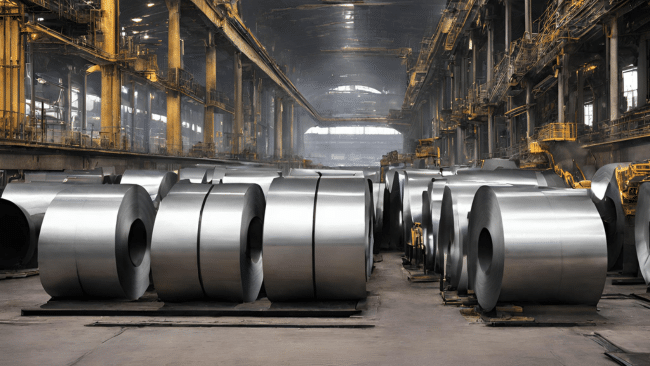The Indian Steel Ministry is considering working with Japan to lower carbon emissions from the steel industry. According to a ministry internal note, it is also thinking about establishing procedures for putting particular technologies into practice “through project funding from Japanese institutions.”
Using green hydrogen as a fuel substitute to partially replace coal is one of the two decarbonisation projects that are presently under way. The other involves creating new coke-making technologies that use less coking coal and exhibit higher oven productivity.
Because iron ore and coal are used as raw materials rather than scrap or other alternatives. India has some of the highest carbon emissions from the steel industry worldwide.
According to ministry documents, India’s steel production process emits 2.2–2.7 tonnes of carbon dioxide per tonne of crude steel produced (T/TCS), compared to 1.8–2 T/TCS globally. Compared to the previous fiscal year, emissions decreased marginally in FY23.
With an installed capacity of 161 million tonnes (mt) and an output of 122 mt, India is the world’s second-largest producer of crude steel.
India’s High Carbon Emissions Challenge: Addressing Raw Material Impact
One of the two projects being considered, called “COURSE 50,” aims to replace some of the coke in blast furnaces with hydrogen in order to reduce carbon dioxide emissions by thirty percent.
This information is contained in an internal ministry note. Aiming to lower carbon emissions, Japanese steel mills previously implemented the COURSE 50 project.
The goal of technologies like carbon capture, utilisation, and storage (CCUS) and reformed coke oven gas (COG) injection is to reduce blast furnace emissions.
In an analysis published recently, the World Steel Association noted that CCUS technologies “can be retro-fitted” into current systems to reduce carbon emissions. Which are expected to reach 8 billion tonnes by the year 2050.
Surprisingly, Japanese steel giant Nippon Steel Corporation announced in August 2023 that it has been developing “Super COURSE 50,” a method at the East Nippon Works Kimitsu Area that uses heated hydrogen to lower carbon dioxide emissions, since May 2022.
The reduction of carbon dioxide emissions from the blast furnace was reported to be 22%, with a target of 30% or more by 2023.
India wants to reduce its carbon emissions by 40% by 2030, 70% by 2047, and 100% by 2070.
Plans call for the introduction of 1,500 GW of non-fossil fuel energy by 2030, with the steel industry’s transition from thermal power to renewable energy sources receiving top priority, according to the note.
Furthermore, the nation wants to produce 5 million tonnes of green hydrogen as part of the National Green Hydrogen Mission.
“COURSE 50” and “SCOPE 21”: Innovative Approaches to Emission Reduction
The second project, SCOPE 21, is a premium coke production method created as part of a national initiative by the Japanese steel sector. In order to increase plant productivity. It permits the use of significant amounts of non-coking or slightly coking coal for the production of coke.
In a review paper that was previously published, Nippon Steel stated that the SCOPE 21 process includes a hot briquetting machine for coal fines, a fluidized bed coal dryer. And a pneumatic preheater for quickly heating coal to 330–380 degrees.
In 2008 and 2013, respectively, the process was developed at Oita and Nagoya Works. Where commercial plants were constructed Since then, they have been operating continuously.
Compared with the traditional method, the process achieves much higher plant productivity and allows for the use of a significantly greater amount of non- or slightly-coking coal for the production of coke.
Techno-economic standards for steel have not yet caught up with international best practices in India.
In contrast to the global average of 2.5–3.5 tonnes per cubic metre per day. Blast furnace productivity in India is, for example, 1.8–3.5 tonnes per cubic metre per day.
Similar to this, India uses a high amount of coke (referred to as the “BF Coke Rate”) in the blast furnace route (337–457 kg/tonne of hot metal produced), compared to the global best practice of 300–350 kg/tonne of hot metal produce.
